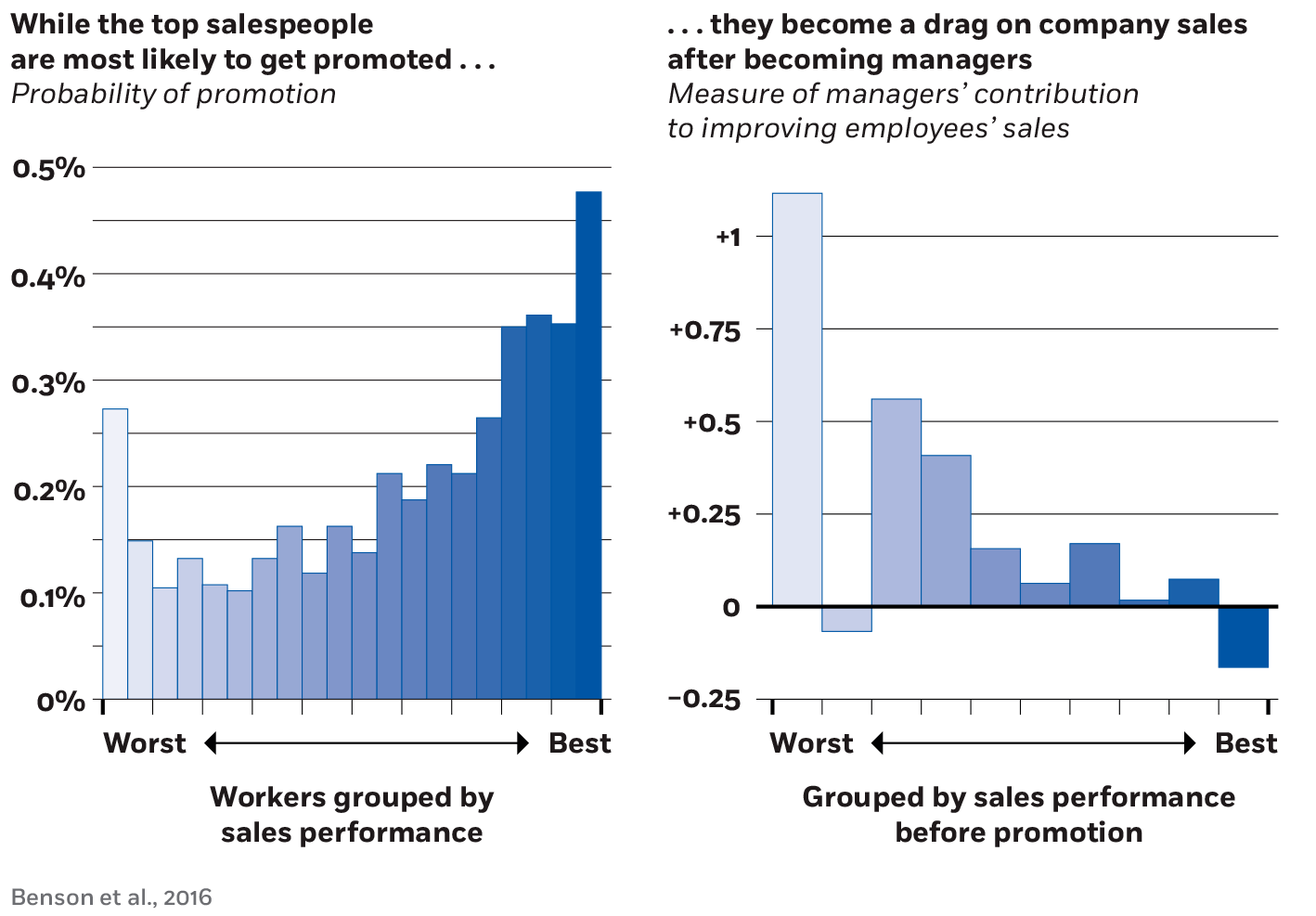The Best Salespeople Don’t Make the Best Managers
- By
- July 12, 2017
- CBR - Strategy
The late educational scholar Laurence Peter in 1969 proposed what is known as the Peter Principle: the most-competent and best-performing employees win promotions for good performance until they reach a position in which they are not competent.
Now data in the sales field strongly support the theory: researchers looking at information about 48,000 sales associates and 5,000 managers find that when companies made promotion decisions, they picked people who had performed well in the past, and not necessarily people who would have made the best managers.
University of Minnesota’s Alan Benson, Harvard’s Danielle Li, and Chicago Booth’s Kelly Shue used detailed microdata on sales workers at more than 200 US companies, examining promotion as a function of both sales performance, or the dollar value of sales, and sales collaboration, or the number of salespeople involved in a transaction. They calculated how well newly minted managers did in managing the sales performance of their direct subordinates, assessing how much sales results changed under the new supervisor.
Companies may base promotions on objective sales measurements to give employees an incentive to work harder in the hopes of attaining a promotion. Promotions based upon current job performance also help to avoid any whiff of favoritism, and to preserve norms of fairness in the workplace. But the researchers find that this has a significant cost. The best salespeople did not make the best managers: demonstrated sales skill, as evidenced by managers whose sales doubled before their promotion, corresponded to a 10 percent drop each in the sales performance of new subordinates.
Fresh support of the famous Peter Principle
Using data from more than 200 US companies, the research finds consistent results.

The typical newly minted manager is in charge of five people. Therefore, the doubling of a manager’s sales predicts a total team sales drop equivalent to half the sales of one worker.
Given the richness of the data, Benson, Li, and Shue were able to evaluate many managers whose subordinates also worked under other bosses. This enabled the researchers to calculate a detailed measure of managerial performance. They credit a manager for improving the performance of her sales staff only when workers performed for her better than they did, on average, under previous supervisors.
The researchers also find that businesses could promote salespeople using other metrics that positively predict manager performance. When deciding promotions, businesses put more weight on individual sales performance than collaboration experience, even though a high level of collaboration before promotion correlates strongly with managerial performance. The research indicates that companies that use promotions as a way of motivating sales in lower-level employees may find themselves overlooking the best potential managers.
Your Privacy
We want to demonstrate our commitment to your privacy. Please review Chicago Booth's privacy notice, which provides information explaining how and why we collect particular information when you visit our website.